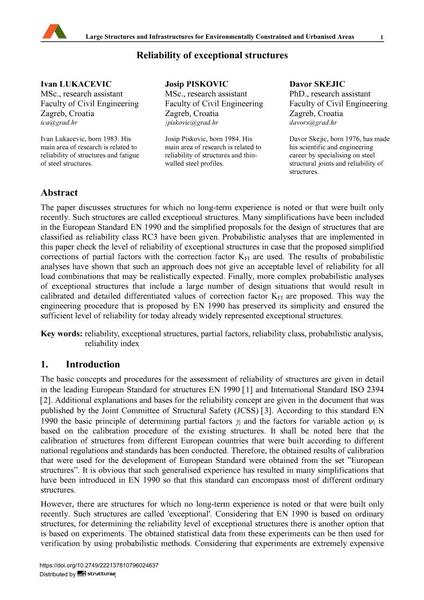Reliability of exceptional structures

|
|
|||||||||||
Détails bibliographiques
| Auteur(s): |
Ivan Lukačević
Josip Piskovic Davor Skejic |
||||
|---|---|---|---|---|---|
| Médium: | papier de conférence | ||||
| Langue(s): | anglais | ||||
| Conférence: | IABSE Symposium: Large Structures and Infrastructures for Environmentally Constrained and Urbanised Areas, Venice, Italy, 22-24 September 2010 | ||||
| Publié dans: | IABSE Symposium Venice 2010 | ||||
|
|||||
| Page(s): | 288-289 | ||||
| Nombre total de pages (du PDF): | 8 | ||||
| Année: | 2010 | ||||
| DOI: | 10.2749/222137810796024637 | ||||
| Abstrait: |
The paper discusses structures for which no long-term experience is noted or that were built only recently. Such structures are called exceptional structures. Many simplifications have been included in the European Standard EN 1990 and the simplified proposals for the design of structures that are classified as reliability class RC3 have been given. Probabilistic analyses that are implemented in this paper check the level of reliability of exceptional structures in case that the proposed simplified corrections of partial factors with the correction factor KFI are used. The results of probabilistic analyses have shown that such an approach does not give an acceptable level of reliability for all load combinations that may be realistically expected. Finally, more complex probabilistic analyses of exceptional structures that include a large number of design situations that would result in calibrated and detailed differentiated values of correction factor KFI are proposed. This way the engineering procedure that is proposed by EN 1990 has preserved its simplicity and ensured the sufficient level of reliability for today already widely represented exceptional structures. |
||||
